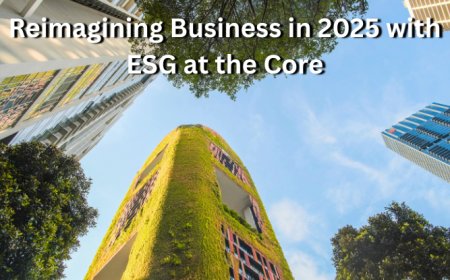Trump’s Tariff Pause Shakes Global Markets
Trump's 90-day tariff pause sparks global market rallies, eases trade tensions, and opens new opportunities for investors and emerging economies alike.

Introduction :
What does 2025 look like for the global economy? After years of turbulence—from pandemics to trade wars to inflation surges—the world is still trying to find its balance. In this post, we’ll unpack key trends shaping the global economic outlook this year, from rising interest rates to regional slowdowns, and what individuals, investors, and businesses should prepare for.
Section 1: The Big Picture—Uncertainty Still Reigns
Global growth remains sluggish, and optimism is cautious at best. Key reports suggest:
-
Global GDP growth could fall below 1% if broad tariffs and protectionism persist.
-
Developed markets (like the U.S. and EU) are facing a mix of inflation fatigue and fiscal tightening.
-
Emerging markets are growing, but unevenly—India is accelerating while others are slowing due to debt and commodity shocks.
According to KPMG’s April 2025 report, geopolitical tensions, volatile energy prices, and rising taxation are keeping businesses and consumers on edge.
Section 2: Key Trends Shaping 2025
1. Sticky Inflation and High Interest Rates
Despite rate hikes in 2024, inflation is proving persistent. Many central banks are:
-
Holding rates steady to tame inflation long-term.
-
Warning against premature cuts, which could spark another inflation wave.
Impact: Loans remain expensive, housing markets are cooling, and consumer spending is cautious.
2. Shift Toward Regionalization
Globalization is not dead—but it’s evolving.
-
Countries are rethinking global supply chains due to geopolitical risks.
-
There’s a move toward “friendshoring”—favoring trade partners with shared political values.
-
Regional trade blocs (like ASEAN and EU) are becoming more economically cohesive.
Impact: More predictable trade within regions, but higher costs and slower innovation globally.
3. Climate Costs and Green Transitions
Extreme weather events are increasing, pushing climate costs to the forefront.
-
Governments are introducing green taxes and carbon pricing.
-
Businesses are under pressure to adopt sustainable practices or risk penalties.
Impact: A shift in investment priorities, with ESG (Environmental, Social, Governance) funds gaining ground.
4. Technology and AI Productivity
While AI threatens to disrupt many job markets, it’s also seen as a productivity booster.
-
Companies are investing in AI to cut costs and scale faster.
-
However, job displacement in sectors like customer service and logistics is already visible.
Impact: Growth in tech-heavy sectors, but rising calls for AI regulation and upskilling initiatives.
Section 3: Mistakes to Avoid & Smart Moves in 2025
Don’t:
-
Rely solely on short-term market trends.
-
Ignore geopolitical risks when investing or sourcing.
-
Delay digitization or sustainability investments.
Do:
-
Diversify revenue and supply chains.
-
Focus on long-term value creation over short-term returns.
-
Track economic indicators in key regions you operate in.
Bonus: Download our “2025 Economic Risk Tracker” to monitor the most critical trends affecting your industry.
Conclusion
The global economic outlook in 2025 is best described in one word: adaptive. Businesses, policymakers, and individuals alike must stay flexible in response to persistent inflation, evolving trade dynamics, and technological disruption. The world may not be stable yet—but with the right insights, you can stay ahead of the curve.
What's Your Reaction?


















































